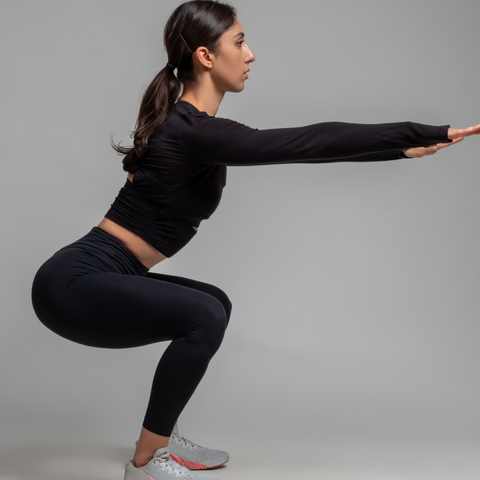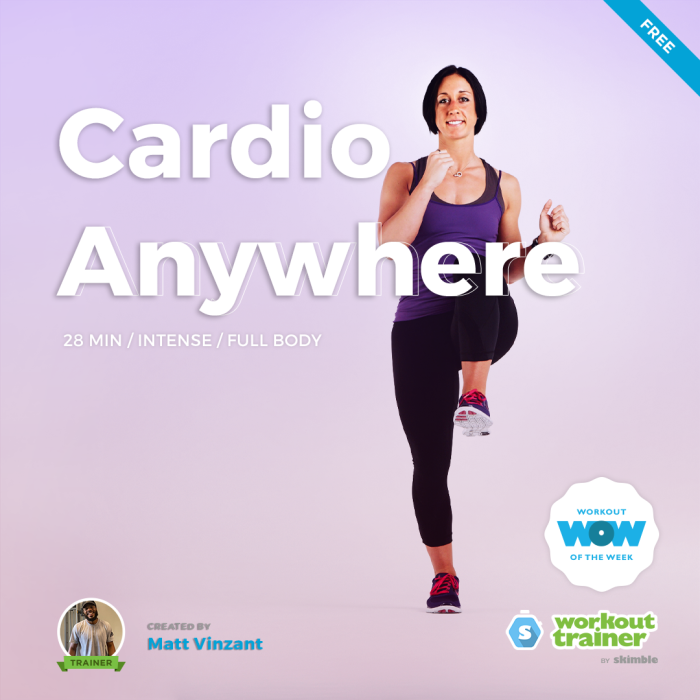We get it, and you’re certainly not alone in your interest. The popularity of ice baths has taken off in recent years and has become one of the most favorited biohacks for improving recovery, fitness, and all-around health.
But in the beginning, ice baths can be semi to extremely intimidating, as few things seem crazier than sitting in a large tub of ice. Plus, it’s likely that while you’ve heard ice baths are good, you still have specific questions regarding how they work and what they do that you want to be answered before you’re willing to take a frigid dip.
If you’re looking for everything you need to know about ice baths (and then some), you’ve come to the right place. After reading our ice bath guide, you’ll feel ready to take the plunge.
Table of Contents:
- What Is Cold Therapy?
- Cold Therapy vs Cold Water Immersion vs Ice Baths: What’s The Difference?
- What Is An Ice Bath?
- Types of Ice Baths
- An Overview Of Ice Bath History
- When Did Cold Water Immersion Become A Recovery Method?
- Ice Bath’s Rise in Popularity
- How Ice Baths Work
- What To Expect Before, During, & After An Ice Bath
- Ice Bath Benefits
- Are Ice Baths Dangerous?
- Ice Bath Risks
- Who Should Take Ice Baths?
- Who Shouldn’t Take Ice Baths?
- Tips & Guidelines For Taking Ice Baths
- Beginner Ice Bath Tips
- Common Mistakes To Avoid
- What To Do After Taking An Ice Bath
- How Often Should You Take Ice Baths?
- FAQs
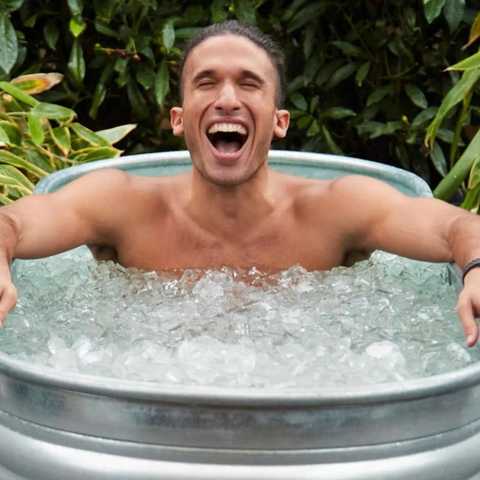
What is Cold Therapy?
Cold water therapy is an umbrella term used to describe various recovery methods that use ice-cold water or other means to induce cold temperatures, including everything from ice baths to cold showers. The goal is to elicit different physiological benefits, such as improved recovery and decreased inflammation¹.
The cold temperatures of ice baths trigger vasoconstriction or the narrowing of the blood vessels, ultimately decreasing blood flow and leading to benefits such as decreased inflammation and less swelling.
In comparison, heat therapy does the exact opposite and increases blood flow.
Cold Therapy vs Cold Water Immersion vs Ice Baths: What’s The Difference?
Both cold therapy and cold water immersion involve using ice-cold water to initiate a variety of physiological responses, including vasoconstriction or the narrowing of blood vessels.
Cold water therapy is the most general term and can be used to refer to any type of cold water, such as cold showers.
Cold water exposure refers to actually sitting in ice water, usually up to neck level. The most common example is taking an ice bath, where a person sits in a tub and is fully “immersed.”
What is an Ice Bath?
An ice bath falls under the bracket of cold water therapy and is just as it sounds: A large tub or basin is filled with water, and ice is then added to cool the water.
Ideally, the water temp is lowered to 48 to 59 degrees Fahrenheit as this is what’s needed to cool the body temperature enough to see the physiological adaptations of cold water immersion¹.
Types of Ice Baths
They say there’s more than one way to skin a cat. Now, we have no idea why you need to skin a cat, let alone have multiple ways to do it, but we get the point. It’s kind of like how there’s more than one way to take an ice bath. You’ve got options.
Here’s a look at a few types of ice baths for you to consider.
1) Inflatable Ice Bath:
If you plan on working ice baths into your regular routine, which you should, as studies show many of the health benefits occur from long-term use, it’s a good idea to invest in your own ice bath.
All you need for an ice bath is for a structure to hold water and be big enough to let you sit in it. When it comes to buying an ice bath, an inflatable tub tends to be the cheapest option, with the average price sitting around $150.00.
2) Permanent Ice Bath:
If you want a more solid structure, you can buy a non-collapsible ice barrel or ice bath. These are sturdy and can retain cold temperatures much better. If you’re interested in going this route, check out our article on the best ice bath tubs on the market.
3) Regular Tub:
The most economical solution is to use your existing tub if you have one! Tubs work great, and since many of us already have one, you save space and time. At the very least, it’s a good idea to start with your tub and then invest in an ice bath tub after you know you’re going to regularly use it.
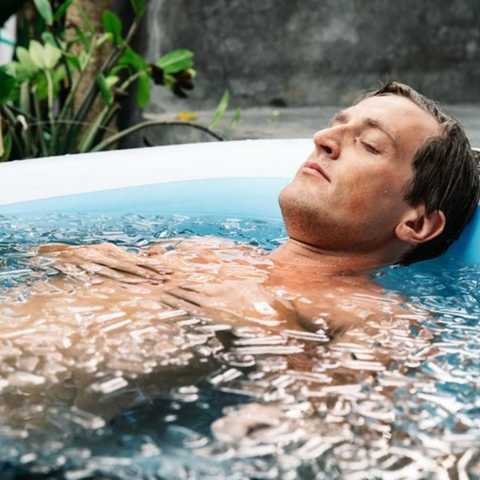
An Overview of Ice Bath History
If you’ve ever jumped in legit ice-cold water, you know it’s not exactly an enjoyable experience. While it doesn’t hurt, the extreme temperatures associated with cold water immersion can take your breath away and lead to slight shock in the beginning.
Interestingly, despite the less-than-pleasant feelings associated with ice baths, they’ve been around for a very long time.
Records of ice baths date back as far as 3,500-5,000 BC. The likes of Plato and Hippocrates are documented as using ice baths, and its origins are thought to be from Ancient Greece1.
At the time, ice baths were mainly used after battles to soothe injuries and fatigue, and improve general well-being. The Roman physician Claudius Galen was documented as using cold water immersion as a homeopathic remedy for fever1.
GROWTH OF ICE BATHS FOR MEDICAL PURPOSES:
From that point, ice baths remained a part of multiple cultures, with the Nordic countries being the most modern civilization to regularly utilize them.
Interestingly, part of their popularity in Nordic culture resulted from not having much choice, as living in Nordic countries in the dead of winter basically leaves you with warmer water that’s still technically very cold.
Even after the invention of electricity, ice baths were so ingrained in the Nordic culture and associated with enough health benefits that they simply remained there.
In addition, in the late 1700s, medical research started to be done on cold water immersion’s effects on human physiology. Physiologist James Currie was the first to document the effect that fever has on the core body temperature as well as the first to track body temperature in this condition1.
During this time, James Currie used ice baths to track his temperature to prove the legitimacy of using icy water to improve one’s health.
WHEN DID COLD WATER IMMERSION BECOME A RECOVERY METHOD?
In the early 20th century, a physician by the name of Edgar A. Hines began to examine the effects of cold therapy on the body’s autonomic nervous system.
Edgar A. Hines observed that cold therapy affected our respiratory rate and heartbeat, in addition to relieving sore muscles and other discomforts.
It wasn’t until the early 2000s that ice bathing began to be looked at as a possible therapy to support muscle recovery from sports and training. To date, it’s pretty common to find an ice bath in a sports physical therapist’s or sports physician’s office.
ICE BATH’S RISE IN POPULARITY
Even after it was reported that there were benefits of ice baths for recovering from sports and training, it initially remained something only used by professional athletes, rather than a common practice used by all gym goers.
That was until the world was introduced to Wim Hof, a Dutch extreme athlete whose specialty is persevering through extreme temperatures. This includes things like swimming in ice-cold water under ice or standing in a container surrounded by ice cubes.
Wim Hof Method:
Wim Hof began to promote what he calls The Wim Hof Method, a program that uses various breathing techniques and cold exposure in a training session2.
The goal of the method is to teach followers to control their fitness variables, such as heart rate and breathing rate.
Doing so is supposed to enable a person to deal with highly stressful or uncomfortable situations and provide numerous health and fitness benefits, including increased energy, better sleep, reduced stress levels, heightened focus and determination, increased willpower, and a stronger immune system.
As we could all use more energy for our workout splits, along with added willpower and determination to get to the gym, those are pretty compelling reasons to try cold exposure!
How Ice Baths Work
The obvious working mechanism of ice baths is freezing cold water. When you first jump in, your body starts to go through a series of physiological reactions. Initially, the shock causes hyperventilation, as well as an increase in heart rate, but this eventually levels off.
When in an ice bath, your blood vessels shrink, restricting blood flow. This shrinking of blood vessels occurs as your core body temperature drops, and it’s suggested that this reaction mitigates swelling and inflammation after an injury.
Here are the different ways an ice bath affects your body.
- Ice baths cause blood vessels to constrict.
- An ice bath increases your heart rate and respiration.
- Ice baths decrease blood flow.
- An ice bath helps mitigate pain.
After sufficient time, the body part that is submerged will begin to go numb and lose sensation. This follows a similar concept to cold therapy machines, another method that uses cold temperatures for treatment and recovery.
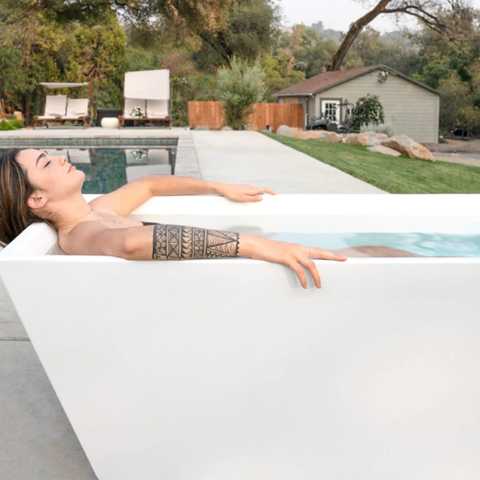
What To Expect Before, During, & After An Ice Bath
So what does an ice bath feel like? While this varies person-to-person, generally speaking, this is what to expect.
The worst part of taking an ice bath will probably occur right before your first time, as you may feel stressed and anxious about what it will feel like. You’ll likely be tense, so do your best to relax and breathe normally.
Getting in will be challenging. Not only will your anxiety still be in high gear, but you’ll also now experience the shock of the icy waters. Try to breathe normally and drop in smoothly when you do.
Once your entire body goes underwater, you will likely experience a “gasp,” causing you to draw in one big breath. This is normal and a natural response, so there’s not a lot you can do about it. At this time, focus on calming your breath and trying not to hyperventilate.
We find that preemptively taking a large breath and then giving a big exhale helps. After, focus on taking big deep breaths, concentrating on your exhale. If you can control your breathing, you can control your heart rate.
It’s important to note that while an ice bath doesn’t hurt per se, it can be a shock. Concentrate on your breathing to take your mind off it, and your body will slowly adapt.
After a minute, the initial shock will wear off, and you will gradually start to feel better. The shock will dissipate, and the extreme cold will also diminish as your body begins to lose sensation.
Try to move as little as possible during your bath, as this will mitigate the sensations. This is why it can be helpful to have a headrest or even handles.
6 Health Benefits of Taking Ice Baths
Now that we understand the physiological effects of ice baths, we can discuss how they play out into practical benefits.
1) ICE BATHS REDUCE THE BODY’S INFLAMMATORY RESPONSE.
Due to decreased blood flow, exposure to an ice bath reduces the body’s inflammatory response, a natural part of the healing process, which helps mitigate discomfort.
There are times when you may want to mitigate the body’s inflammatory response and the pain that results, and ice baths can help.
2) ICE BATHS IMPROVE THE RECOVERY PROCESS AND DECREASE MUSCLE SORENESS.
This is probably the most common reason why the general public tends to become interested in ice baths. And, if you’re wondering why athletes take ice baths, it’s primarily to help with muscle soreness during workout recovery.
Here’s an example of how it helps. Let’s say you’re a runner who has just finished a longer race or training session. Cold water will effectively reduce your muscle soreness and mitigate the severity and longevity of delayed onset muscle soreness (DOMS)3. It may also help to eliminate metabolic waste faster4.
In addition, ice baths are also beneficial to the central nervous system as they can promote better sleep. As we all know how important sleep is for recovery, it’s easy to see how better sleep is good for workout recovery.
3) ICE BATHS HELP YOU DE-STRESS.
Your valgus nerve is one of your primary nerves that relays information to and from your cardio and respiratory systems5. It acts as an interface between things such as your lungs and heart and can control your response to stressors.
By stimulating it with deliberate cold exposure, studies have shown the valgus nerve can help relieve stress and help you better handle stressful conditions.
In addition, the constant secretion of norepinephrine and epinephrine routinely places your body under stress. Doing so teaches your body to handle these situations with a calm and clear head.
4) ICE BATHS BUILD YOUR IMMUNITY.
Researchers have noticed a unique benefit of using an ice bath consistently: Chronic ice bath use can boost your immunity.
A study found that a single cold immersion at 14 degrees C for 1 hour did not affect the immune system of young, athletic men⁵. However, after 6 weeks of using cold water immersion at least three times a week, a small, yet significant improvement was seen.
Researchers concluded that the stress-inducing effects of consistently using cold water immersion resulted in a meaningful increase in immunity, likely due to the increase in catecholamines, a neurohormone that plays a role in stress response.
5) ICE BATHS DECREASE PAIN PERCEPTION AND REDUCE SWELLING.
Extremely cold temperatures can effectively reduce sensation to the point that it has a numbing effect. In addition, ice bathing reduces blood flow to submerged areas, which mitigates edema (swelling). These two factors can make ice baths very useful for treating trauma injuries.
In fact, studies have found that using ice packs is effective at relieving postoperative pain⁶. Using an ice pack has even been shown to reduce the use of narcotics for pain relief. Due to it being low-cost and low-risk, using ice packs has been encouraged to help treat discomfort after surgery.
Just remember exposing yourself to frigid temperatures for extremely long periods can make taking a cold plunge dangerous, so only stay in for the suggested amount of time!
6) ICE BATHS OFFER POTENTIAL MENTAL HEALTH BENEFITS.
Studies show that regular ice baths can also improve your mood and well-being.
A study examined the effect of regular cold water immersion on patients experiencing signs of depression⁷. Patients took one or two ice baths daily, sitting in water at 20 degrees Celsius for 2-3 minutes. This went on for at least several weeks, while some patients followed this ice bath protocol for months.
While the patients in the study weren’t clinically depressed, they did have mild signs of depression, which they saw significantly improve.
While the study acknowledged that further testing is needed, when you consider the cost-effective price and the low risk of negative side effects, adding ice baths, along with a regular workout split, to your mental health routine may be a good idea. If you’re experiencing any signs of depression, we highly recommend speaking to your doctor first.
Are Ice Baths Dangerous?
Ice baths can be dangerous, as taking one requires you to sit in extremely cold temperatures for a prolonged period. Doing so places a great deal of stress on your body and is what causes many of the beneficial physiological reactions.
Unfortunately, there’s a threshold to the time you spend in ice baths and the number of benefits you get. Further, there are always risks associated with exposing yourself to extreme conditions. Let’s take a closer look at ice bath risks.

4 Ice Baths Risks
Knowing the risks can help you prevent and prepare for them. Here are 4 risks to watch out for.
1) Hyperventilation:
Hyperventilation is a normal response when people start using ice baths. Even veterans will still experience this to some degree, as it’s a natural physiological reaction.
It’s described as abnormal breathing and is usually caused by abnormal or extreme environmental conditions (such as cold water immersion) or emotional stress. An affected person will begin to have rapid, deep exhales and a decrease in carbon dioxide in the blood. As a result, your body will react, which can result in the following:
- Dizziness
- Tingling of the lips
- Tingling of hands or feet
- Headache
- Weakness or fainting
- Seizures
Studies show that this can occur at temperatures as warm as 25°C. However, peak response occurs between 15 and 10°C when naked8.
This is why it’s important to not go too cold in the beginning. If you begin to experience extreme hyperventilation and can’t control it, lift your body out of the water.
Sitting in the frigid water at heart level tends to be the point that induces this reaction, so pushing yourself up until the water is below chest level should dramatically help. And, if you start to feel dizzy, get out of the tub immediately.
2) Gasp Reflex:
The gasp reflex is a response that almost everyone makes when they first hit very cold water. If you’ve ever been in the shower when someone flushes the toilet, likely, you’ve already experienced the gasp reflex. The vast majority of people will involuntarily draw in a huge breath8.
While this isn’t dangerous in itself, it is if your face is submerged. Drawing in a considerable amount of water is never a good idea and could cause a cascading effect of nasty things.
You can avoid any dangers with this by being aware and cautious. All you have to do is ease yourself in slowly, and the potential issue is diverted.
3) Drowning:
While this may seem like one of those silly warning tags like “Do not use a hairdryer in the tub,” cold immersion after an intense workout really can produce physiological effects that make drowning a real possibility.
If you are new to cold water immersion, or you are just excessively hot due to the weather or following an intense workout, dropping in ice cold water can result in a cold shock response.
Cold shock response is a term used to describe the shutdown of the body in response to extreme cold. To contextualize, there is a reason almost 55% of all drownings occur very close to land (3 miles of a safe refuge) and 42% within 2 miles, with two-thirds of these occurring in people considered good swimmers9.
This is thought to occur in those who enter cold water for too long. As their body temperature decreases, they experience uncontrollable hyperventilation and/or the gasp reflex spoken about above, which can ultimately lead to drowning.
4) May Reduce Muscle Hypertrophy:
While maybe not necessarily dangerous, this is certainly a risk if you’re busting your ass in the gym only to ruin it by doing something that’s supposed to be helping you. This issue arises due to people conflating muscle growth with muscle and workout recovery. Some lifters believe that if you recover faster, muscle growth will occur faster.
Unfortunately, that’s not how it works. This is similar to tattoo artists advising you to not put ointment on a new tattoo. This is because, for the ink to stay, the skin needs to go through the entire healing process. Applying a healing ointment speeds up this recovery process, thus mitigating the quality of the tattoo.
While researchers aren’t entirely sure what mechanism reduces muscle growth, they know it happens10. Inflammation is part of the natural process of muscle hypertrophy, so when this is interrupted with cold baths, it results in the mitigation of growth in the muscle fibers.
To be clear, it doesn’t take away muscle; it just makes growing muscle a much harder process. With this in mind, if your main goal in the gym is muscle growth, ice baths can be risky.
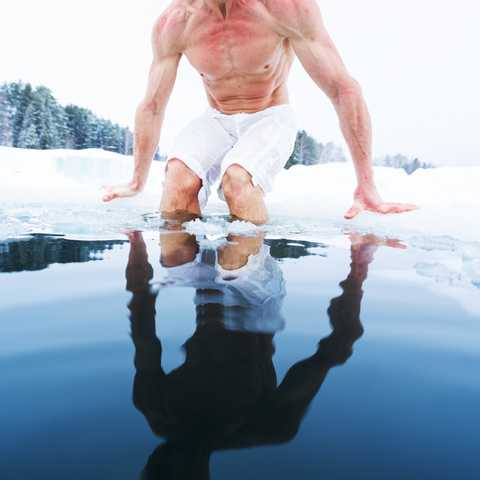
Who Should Take Ice Baths?
Anyone! Well, not anyone, as you’ll see below, but most people can enjoy an ice bath.
But the group that will experience the biggest benefits is elite athletes. A meta-analysis found that significant improvements in recovery were only seen in elite athletic populations11.
If you’re not an elite athlete, this certainly doesn’t mean you can’t take one. It just means you should go in with proper expectations. It’ll probably still help, but it may not make a huge difference.
Who Shouldn’t Take Ice Baths?
Ice baths are generally safe for everyone, but a few people will need to sit out and stay warm.
People who should avoid ice baths include:
- Those with circulatory issues like peripheral vascular disease, as this can be exacerbated due to vasoconstriction.
- Anyone with a history of frostbite.
- Anyone with Raynaud’s disease as it increases the perception of cold.
- Anyone with an open wound or recent surgery.
If you have a heart condition or things such as high blood pressure, speak to your doctor before beginning an ice bath routine.
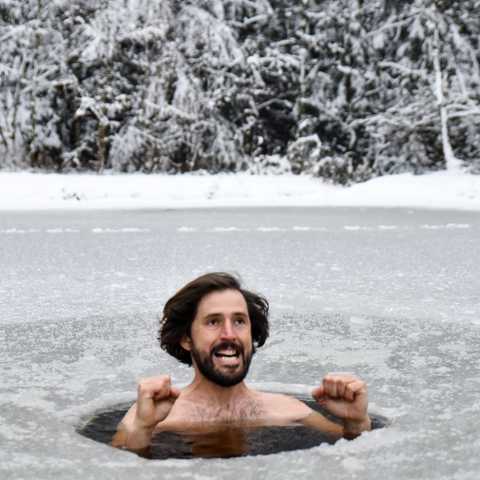
Tips & Guidelines For Taking Ice Baths
These tips will ensure your ice baths go smoothly and are enjoyable.
- Set up your phone or any other gadgets you might need close by, so you can reach them.
- Place your towel nearby.
- Start slow and always lean toward a shorter bath at “warmer temperatures,” particularly in the beginning.
- Don’t think that going colder always means better results.
- Be consistent. Many benefits occur after repeated use.
In addition, we’ve provided guidelines and suggestions below to help you get the most out of your ice bath experience.
1) Ideal Temperature:
You’ll need to get the temperature right when setting up an ice bath at home. When taking ice baths, aim for between 50-59 degrees Fahrenheit (10-15 degrees Celsius).
This is the ideal temperature range for cold water therapy, as it tends to be the threshold required to invoke the desired physiological response. After putting in the ice, you’ll likely need to wait about 10 minutes or so to allow the temperature to drop.
However, for those new to ice baths, this can be exponentially cold to the point that you are unable to stay in long enough to experience ice bath benefits. If you’re new to ice baths, start with slightly warmer water at first.
For example, use as cold of water as possible and then just add one bag of ice. After you get acclimated to that, you can slowly add more ice until you reach your target temperature.
2) Water-To-Ice Ratio:
We recommend using a 3:1 water-to-ice ratio.
3) Body Exposure:
When you want to quickly lower your body temperature, submerge yourself to neck level. The main reason for this is you want as much skin underwater to minimize the time needed to cool down. Further, it’s theorized that submerging the heart has a drastic effect on lowering body temperature.
That said, you can also use this concept if you find you’re too cold. Beginners may want to start by alternating between neck and chest levels, gradually increasing the time they spend at the neck level.
4) How to Prepare Ice Baths:
Before you begin, set out a warm towel and clothes next to the ice bath. Further, if you want music or will need your phone, have that prepared. Also, think about setting up a headrest. Not only will this make you more comfortable, but it can also help hold you in place. Finally, have a timer set up and ready to go.
After deciding what you will use for your ice bath, you need to prepare it. You will first need to get your running water as cold as possible and then fill the tub about half full. This will depend on the size of your tub and your size. Remember, your body will displace a lot of water, and you will also add ice.
As the bath is filling, you may want to add Epsom salt, which decreases the water’s freezing point and lowers the water’s temperature. But be careful, because adding too much can lower the temperature too significantly. Start with a small amount, adding a few big tablespoons, to begin with. Remember that you don’t even need to add salt, but it can help speed up the cooling process.
Next, you will add the ice. A ratio of 3:1 is the most common water-to-ice ratio. Start here and adjust as necessary. As you add ice, you can measure the temperature of the water until it reaches your desired temperature of 50-59 degrees Fahrenheit. This may seem tedious, but it may help you, at least in the beginning, to give you an idea of how cold water feels.
Once you’re fully submerged, start the timer and enjoy (or at least don’t suffer!).
5) Best Times to Take Them:
The best time to take an ice bath depends on why you’re taking them. As many people take ice baths for enhanced recovery and to reduce DOMS, they should be taken approximately 30-60 minutes post-workout.
Some anecdotal evidence has suggested it can be up to 2 hours after, but this may not fit your schedule great. Most of us want to work out, take an ice bath, and then move on to our regular shower.
If you have an acute injury, take your ice bath shortly after receiving the injury or immediately post-workout (assuming it’s safe for you to exercise).
In general, however, the morning is the best time to take one, shortly after you wake. Doing it at this time could jumpstart your metabolism, mood, or both!
6) How Long To Stay In:
This can vary significantly, depending on the person and the water temperature. That said, the average ice bath time is somewhere between 10-15 minutes. After this, most people will start to see diminishing effects while raising the chance of hypothermia, which occurs when the internal body temperature drops below 95 degrees Fahrenheit.
Unless you use a direct measuring device, you won’t know when this occurs. This is why you should always be strict with your time limits, and take a “better safe than sorry” approach.
So, keep your ice baths to the 15-minute max. When looking at physiological benefits ad research, it’s not even clear that there are any potential extra benefits to be had from going longer.
7) What to Wear:
This is going to be a personal decision, but ideally, you should wear as little as possible. Remember that you’ll need to take your clothes off once you get out anyway, and they will just get in the way.
Therefore, nude is the best option, but if you don’t feel comfortable doing this or you’re in a setting where it isn’t really a choice, wear as little as possible, like your underwear or a swimsuit/bikini.
8) Equipment Needed:
You don’t need a ton of equipment to take an ice bath. And a lot of the suggested supplies, you’re able to get creative with. For example, the tub could be a kiddie pool, inflatable ice bath, ice tub or ice barrel, a cleaned-out aluminum garbage can, or your tub at home.
Here’s what you need:
- Ice Tub: You obviously need a place to take a bath.
- Water Source: Ideally, you have a faucet or hose to fill the tub directly.
- Ice: We need to make it icy!
- Stop Watch/Timer: Do not forget this. You do not want to guess how long you’ve been in and stay in too long.
- Salt (Optional): This can speed up the cooling process. Some also like to add salt to incorporate a cleansing benefit as well as possibly improve relaxation and serotonin production.
- Oils (Optional): Similar to salt, certain oils and scents may help you relax, further boosting your mood and decreasing your risk of hyperventilation.

Beginner Ice Bath Tips: How to Get Started
New to ice baths? These three tips will help get you started!
1. KEEP YOUR CHEST OUT OF THE WATER:
One useful trick when you begin taking cold baths is to keep your chest out of the water. Not only will this keep less body area submerged, but your heart and lungs will stay above water, which can significantly decrease your initial shock.
Then, either in that session or the next, you can start to alternate between neck and stomach levels.
2. CONTROL YOUR BREATH:
While you don’t necessarily need to follow Wim Hoff, we can learn a lot from him. His emphasis on controlling your breath is the best thing you can do to keep from panicking.
This is also common in endurance racing and is known as “calm outside, calm inside.” The theory is that if you can keep your breathing under control with slow, deep breaths, you will keep your heart rate down and remain calmer.
Want to test it out? Try focusing on the “calm outside, calm inside” method the next time you partake in a long LISS cardio session.
3. Start With Cold Showers:
If you’re brand new to cold therapy but would like to try to take an ice bath, you may want to start with ice-cold showers for a while. Turn the shower on as cold as you can and then stand in it for as long as you can for up to 20 minutes.

Common Ice Bath Mistakes to Avoid
Make the most out of your ice bath by avoiding these 3 common mistakes.
- Getting in too early! Always wait for the temperature to cool off first.
- Not bringing a stopwatch or alarm. Ice baths are generally safe, assuming you stay in an appropriate amount of time. Without a stopwatch, you’re guessing. Unfortunately, one of the negative side effects that can happen without warning is confusion and decreased cognition. In other words, once you start experiencing side effects, you may not be aware enough to realize it.
- Not preparing dry clothes or a towel. Trust us, you’ll regret not having a towel close by.
What To Do After Taking An Ice Bath
We suggest quickly jumping in a warm shower. The warmer temperatures will open up your blood vessels (vasodilation) and can help to flush out built-up toxins. This form of training is known as contrast training.
Plus, it’ll just feel really good to take a hot shower after sitting in ice water.

How Often Should You Take Ice Baths?
Unfortunately, there are no existing studies that look at the optimal frequency for ice baths. That said, if you are using them for acute benefits, it makes sense to use them frequently. For example, if you are a serious lifter following a 5-day workout split, you should hit the ice bath 5 times a week after your training.
FAQs
Let’s answer any remaining ice bath questions you have here.
Are ice baths good for you?
Yes, as long as you use them correctly and have the right expectations. Some of the proven benefits include reducing muscle soreness, providing pain relief (everything from DOMS to ailments such as arthritis), reducing inflammation, and improving sleep and mental wellness12-15.
How long should you take an ice bath for?
A meta-analysis found that using water temperature between 11 and 15 °C for 11–15 minutes provides optimal results for most people. Interestingly, this includes both acute responses as well as chronic benefits16.
How often should you do ice baths?
No studies (that we know of) have examined optimal frequency so we can’t say for sure. However, most serious practitioners recommend taking an ice bath 2-3 times a week. This may be in addition to taking cold showers, which is done daily. Some may benefit from taking one up to 5 times a week, depending on their training level and time frame.
When should you take an ice bath?
The timing of your cold bath can differ depending on why you’re taking one. If you’re taking one to reduce DOMS and muscle stiffness, take one within 2 hours post-workout. If you’re taking one to speed up your metabolism or improve your mood (or both!), take your icy plunge first thing in the morning.
How painful is an ice bath?
This is a highly nuanced question, as that will differ greatly depending on who answers. Rather than thinking of it as pain, consider it more of a highly uncomfortable situation that may sting more the first few times you do it. Any pain and discomfort will diminish fairly quickly as your body becomes numb to sensations.
What Are The Do and don’ts of ice baths?
Do use a timer, prepare dry clothes and a towel, and practice breathing exercises. Don’t sleep in the tub, stay in longer than the recommended time, begin with open water or cold lake swimming, or panic.
How do I make an ice bath for beginners?
Beginners and veterans will make their ice baths in the same way. However, a few changes can be made to better suit a beginner’s needs. Those just starting out may want to sit in the bath as it fills up to better adjust to the water. Also, only use the coldest water you can instead of adding ice. You could sit in the bathtub slightly longer this way and still let your core body temperature drop. Or if you want to add ice, simply add less of it to start.
How do you make an ice bath at home?
For a DIY ice bath, use your bathtub or buy a portable ice tub. Fill it about halfway with water and then add ice with a 3:1 ratio (water-to-ice). You can measure the temperature or just wait for a few minutes for the temperature to cool. Slowly get into the water until it reaches neck level, set the timer, and relax.
What should I do immediately after an ice bath?
After you get out of the ice bath, you have a couple of options. Your first option is to get out and immediately dry off. The second option is to get into a warm shower to implement a contrast bath or simply use it to quickly warm up. Either way, you will want to dry off and get warm. Remember, you’ll be soaked, so just because you’re out of the water doesn’t mean you can’t get colder.
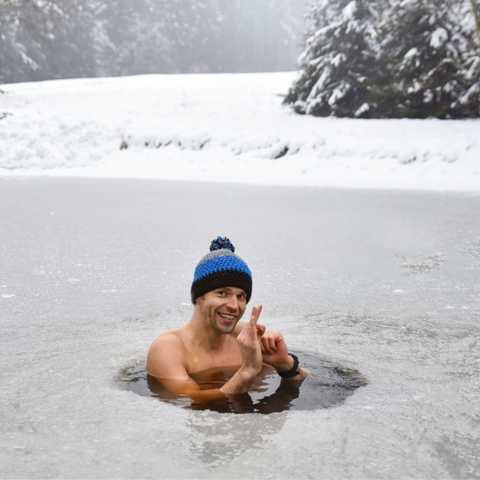
Ice Baths: Final Takeaways
There you have it! Everything you need to know about taking baths in icy cold water for health and fitness benefits. There’s no denying ice baths can be beneficial and look cool in Instagram pics, but just remember they’re not magic bullets. They should be used as one of several strategies to help optimize your recovery.
If you plan to do them consistently and believe your training warrants using one, we strongly recommend buying one that you can use at home. Consistency is key with ice baths, and one of the best ways to stay consistent is to have one nearby!
You now know everything necessary to set up and take an ice bath. And if you’re ready to purchase one for at-home use, check out our article on the 5 Best Ice Bath Tubs To Optimize Your Recovery!
Our Top Pick
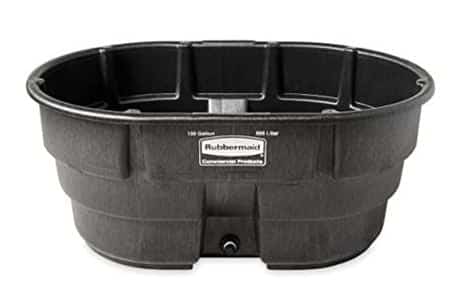 Rubbermaid Stock Tank
Rubbermaid Stock Tank
The Rubbermaid Commercial Stock Tank, 150 gallon, has a sleek appearance and smooth black color. This 150 gallon stock tank features an easy-to-use drain and seamless structural foam construction that resists weathering and cracking for long use…
CHECK PRICE
- Allan, R., Malone, J., Alexander, J. et al. Cold for centuries: a brief history of cryotherapies to improve health, injury and post-exercise recovery. Eur J Appl Physiol. https://doi.org/10.1007/s00421-022-04915-5
- Citherlet, T., Crettaz von Roten, F., Kayser, B., & Guex, K. (2021). Acute Effects of the Wim Hof Breathing Method on Repeated Sprint Ability: A Pilot Study. Frontiers in sports and active living. https://doi.org/10.3389/fspor.2021.70075
- Tavares F, Beaven M, Teles J, et al. (2019) Effects of Chronic Cold-Water Immersion in Elite Rugby Players. International Journal of Sports Physiology and Performance. doi:10.1123/ijspp.2018-0313
- Bouzigon, R., Dupuy, O., Tiemessen, I., De Nardi, M., Bernard, J. P., Mihailovic, T., Theurot, D., Miller, E. D., Lombardi, G., & Dugué, B. M. (2021). Cryostimulation for Post-exercise Recovery in Athletes: A Consensus and Position Paper. Frontiers in sports and active living. https://doi.org/10.3389/fspor.2021.688828
- Jungmann, M., Vencatachellum, S., Van Ryckeghem, D., & Vögele, C. (2018). Effects of Cold Stimulation on Cardiac-Vagal Activation in Healthy Participants: Randomized Controlled Trial. JMIR formative research. https://doi.org/10.2196/10257
- Watkins, A. A., Johnson, T. V., Shrewsberry, A. B., Nourparvar, P., Madni, T., Watkins, C. J., Feingold, P. L., Kooby, D. A., Maithel, S. K., Staley, C. A., & Master, V. A. (2014). Ice packs reduce postoperative midline incision pain and narcotic use: a randomized controlled trial. Journal of the American College of Surgeons. https://doi.org/10.1016/j.jamcollsurg.2014.03.057
- Shevchuk N. A. (2008). Adapted cold shower as a potential treatment for depression. Medical hypotheses. https://doi.org/10.1016/j.mehy.2007.04.052
- Mekjavić, I. B., La Prairie, A., Burke, W., & Lindborg, B. (1987). Respiratory drive during sudden cold water immersion. Respiration physiology. https://doi.org/10.1016/s0034-5687(87)80037-3
- Tipton, M. J., Collier, N., Massey, H., Corbett, J., & Harper, M. (2017). Cold water immersion: kill or cure?. Experimental physiology. https://doi.org/10.1113/EP086283
- Roberts LA, Raastad T, Markworth JF, et al. Post-exercise cold water immersion attenuates acute anabolic signaling and long-term adaptations in muscle to strength training. The Journal of Physiology. doi:10.1113/jp270570
- Stephens JM, Halson S, Miller J, Slater GJ, Askew CD. Cold-Water Immersion for Athletic Recovery: One Size Does Not Fit All. International Journal of Sports Physiology and Performance. doi:10.1123/ijspp.2016-0095
- Allan R, Mawhinney C. Is the ice bath finally melting? Cold water immersion is no greater than active recovery upon local and systemic inflammatory cellular stress in humans. The Journal of Physiology. doi:10.1113/JP273796
- Garcia, C., Karri, J., Zacharias, N. A., & Abd-Elsayed, A. (2021). Use of Cryotherapy for Managing Chronic Pain: An Evidence-Based Narrative. Pain and therapy. https://doi.org/10.1007/s40122-020-00225-w
- Chauvineau, M., Pasquier, F., Guyot, V., Aloulou, A., & Nedelec, M. (2021). Effect of the Depth of Cold Water Immersion on Sleep Architecture and Recovery Among Well-Trained Male Endurance Runners. Frontiers in sports and active living. https://doi.org/10.3389/fspor.2021.659990
- Kelly, J.S., & Bird, E. (2021). Improved mood following a single immersion in cold water. Lifestyle Medicine.
- Machado, A.F., Ferreira, P.H., Micheletti, J.K. et al. Can Water Temperature and Immersion Time Influence the Effect of Cold Water Immersion on Muscle Soreness? A Systematic Review and Meta-Analysis. Sports Med. https://doi.org/10.1007/s40279-015-0431-7































